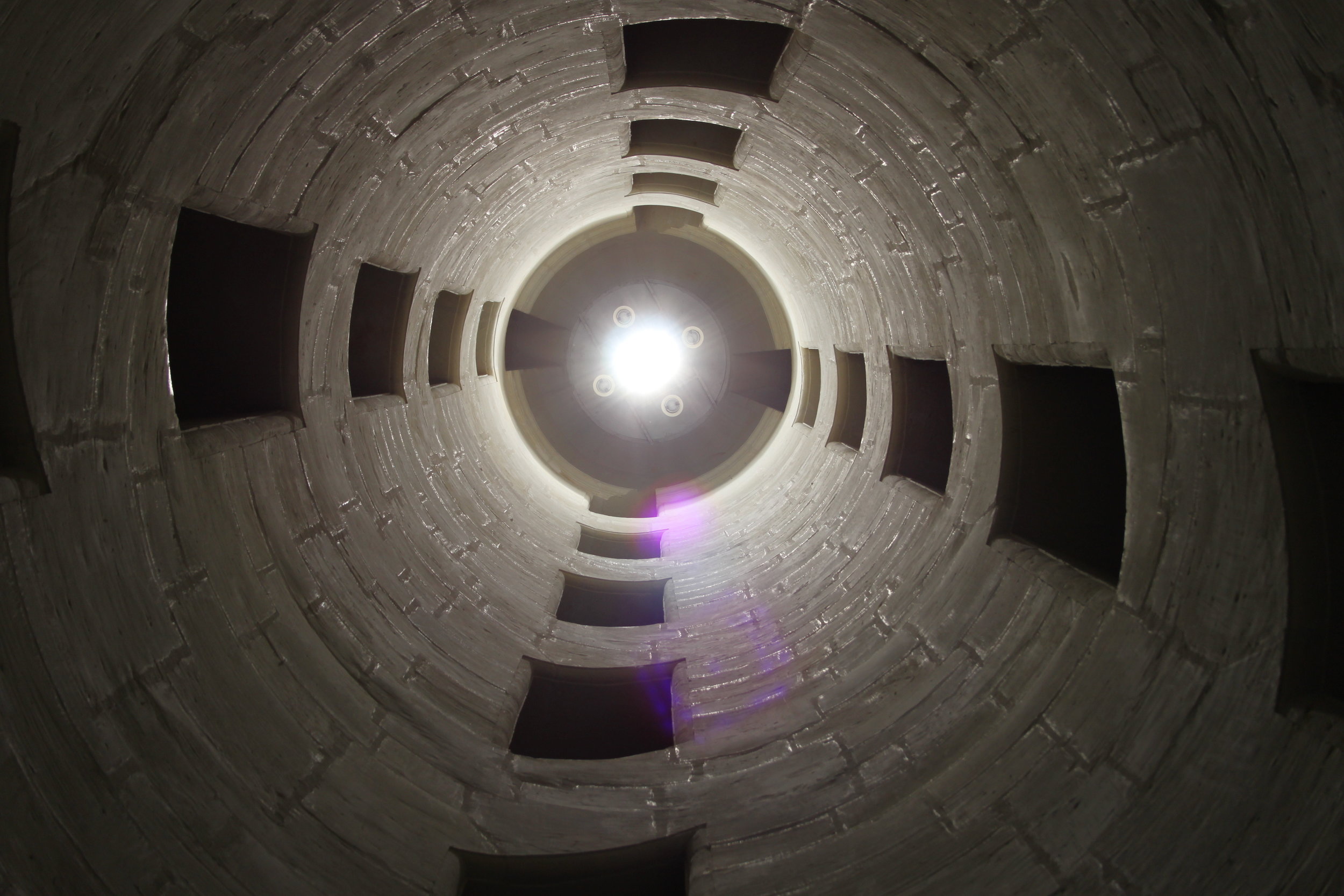Travels in the Loire: Visiting Le Château de Chambord
/We drive down to the Loire Valley from Paris on Friday night, battling the peripherique and multiple lanes of rush hour traffic with only the anticipation of a quiet, countryside weekend keeping us going.
Our Airbnb is in the historic centre of Beaugency, a tiny village about thirty minutes from Orleans. We booked it because the photos showed views directly onto the Loire river, and it appeared to be in the middle of absolutely nowhere. When we arrive we find that we’ve accidentally ended up in a deeply historic town. The bridge that we can see from our kitchen is over 1,000 years old, and was crossed by Joan of Arc as she arrived to fight the Battle of Beaugency during the Hundred Years War. Much later, James Joyce wrote a letter to his grandson describing the local legend- that the bridge was built by the devil in one night exchange for the soul of a village cat. His story was later turned into a children’s book. The town has the remains of a Roman era Church and it’s own castle.
France is like that.
Despite being accidentally surrounded by so much history, our main target for the weekend is Château de Chambord, about 30 minutes drive away. As the most famous and prominent castle in the region, it can get very busy in the summer months, but after driving through the thickly wooded domain that surrounds it (and past signs alerting us to wild boar and deer that roam about) we find it half-empty in the cold and crisp early December air.
The first thing that strikes me as we enter is the height of the roof and the size of the rooms. The second thing that strikes me is the crackling fireplace. The third thing? A huge, jolly Christmas tree. Compared to certain over-crowded French castles I could name, these are warm and promising signs.
It is suspected that Leonardo da Vinci may have had a hand in designing the Château, a piece of information that will surprise nobody who has seen it. He lived and died in the region, was known to Francois I, the first 'king of the castle', and many elements of the castles design recall the genius inventor and artist, none more than the great double-helix spiral staircase around which the four neatly divided quarters of the castle revolve.
We begin our visit, slowly moving clockwise through the enormous rooms, many of which are furnished with more wonderful real, live roaring fireplaces. They warm up our gloved hands, but do nothing to take the chill out of the vast spaces, which are filled with renaissance parlor games, restored furniture and various royal portraits including a bunch of Louis’ that I know from my days as a tour guide. As we move through rooms and around the first floor, we are effectively rotating around the great staircase, and I am reminded of the Panopticon — a circular prison containing a single watchtower in the centre. But instead of being designed with a one-way surveillance in mind, as was the prison, in this castle both those in the staircase and those in the rooms are watched and watchers.
While climbing or descending, you can easily see into two floors at once, as well as multiple rooms, a slightly destabilizing sensation, like catching glimpses of 10 different TV’s at once.
Neatly quartered, no one portion of the castle clearly dominates any other and the open sides of the staircase and its peekaboo nature gives the user a strangely omnipresent view. On the flip side, anybody using the staircase could be seen in bits and pieces at all times as they transitioned between floors before finally emerging into the room. Hardly the kind of grand entrance an all-powerful king like Louis XIV would have desired.
Further up, we discover a large exhibition devoted to Henri of Artois, Count of Chambord, the last legitimate descendant in the male line of Louis XV, who lived in the castle for decades. I know very little about this branch of the royal family, find it fascinating to consider that he continued acting out his quasi-kingly role here, for decades after the French Revolution. There is even a throne room and richly decorated throne.
When we finally get to the large open roof of the castle, we are greeted with a spectacular sight of the grounds. Trees planted alongside a long path draw the eye down a long pleasing perspective, and a large canal hugs the north and eastern faces of the castle then doglegs off at an angle to rejoin join the Cosson River.
The roof itself feels like something straight out of a fairy tale— a mini city-scape of towers, windows and exquisite details which make it hard to get a good grasp on it as a whole. Again, I notice the peekaboo effect and everywhere I turn my head I see interesting angles and plays of light.
It is around here that I become fixated on the patterns and wonderful details that surround us: the monster head that forms the drainpipe. The repeating salamander (symbol of Francois I) carved into the stone. The richly elaborate wallpaper that is different in every room. I go a bit crazy with the photos and as we make our way back down and through the rooms, I dart off left and right to photograph the walls, door handles and bits of carpet.
As we leave, we walk for a while along the canal trying to spot the many birds, frogs and mammals that live with in the tall reeds, then head to the cafe for a crepe and hot chocolate to warm us up for the drive back to our cottage.
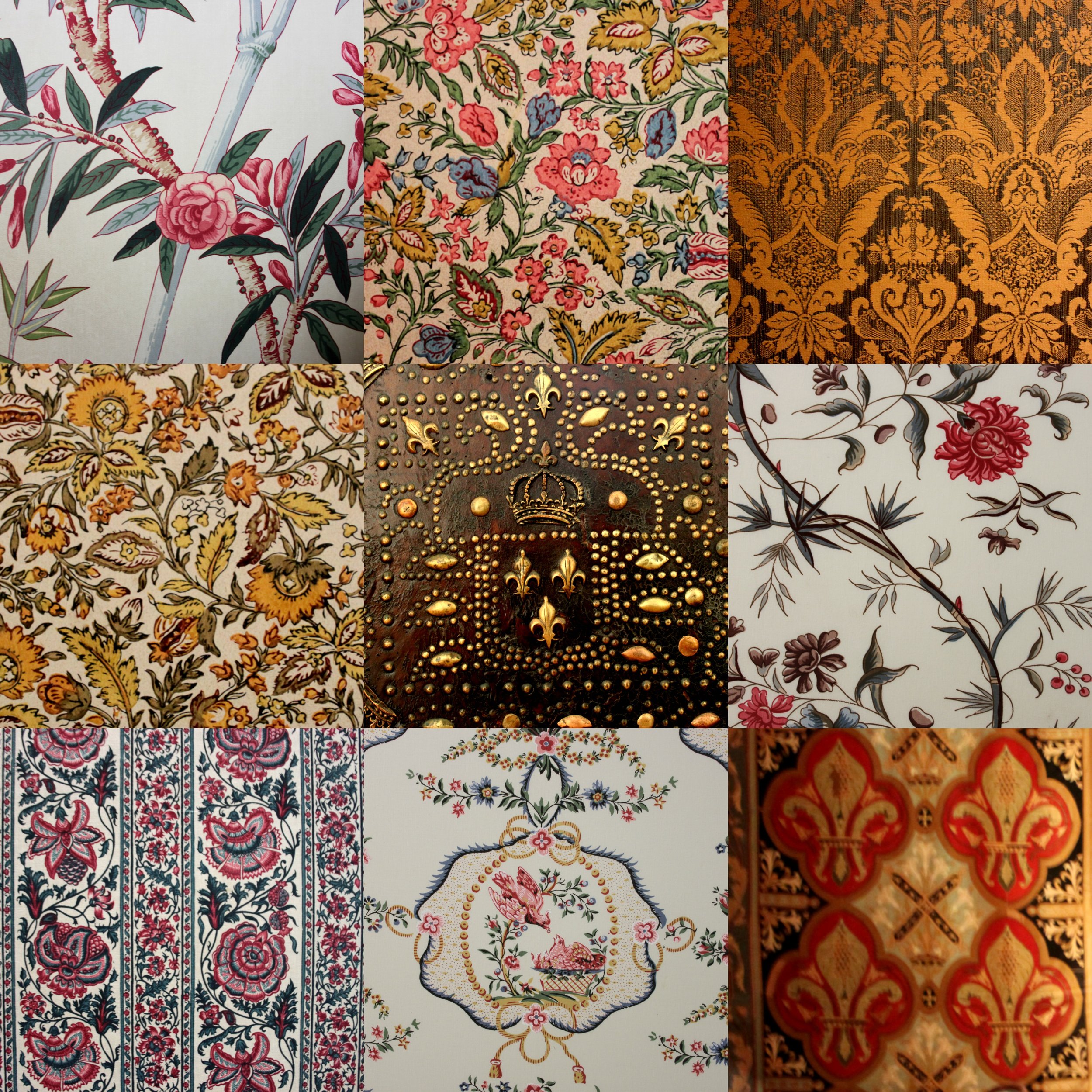
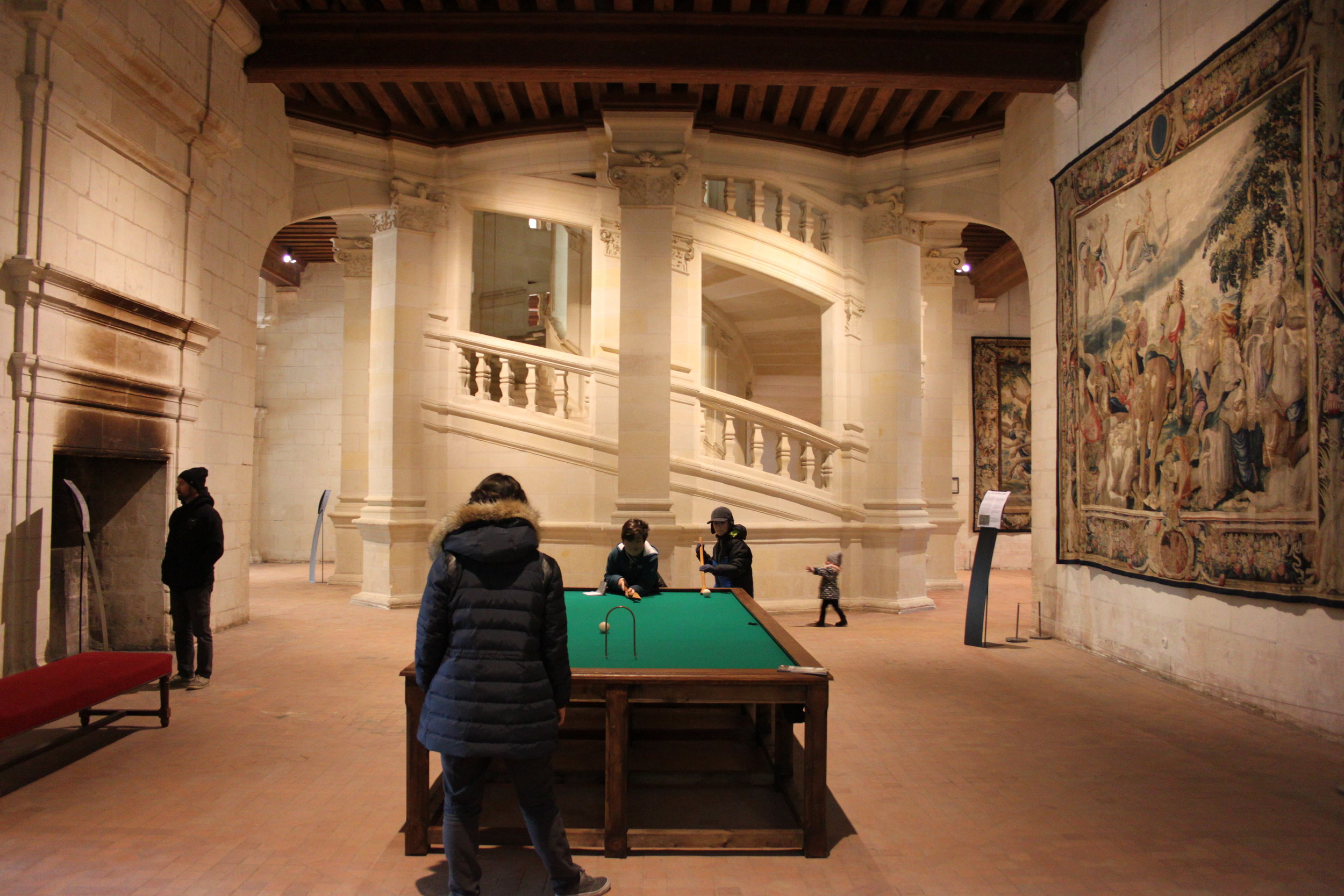
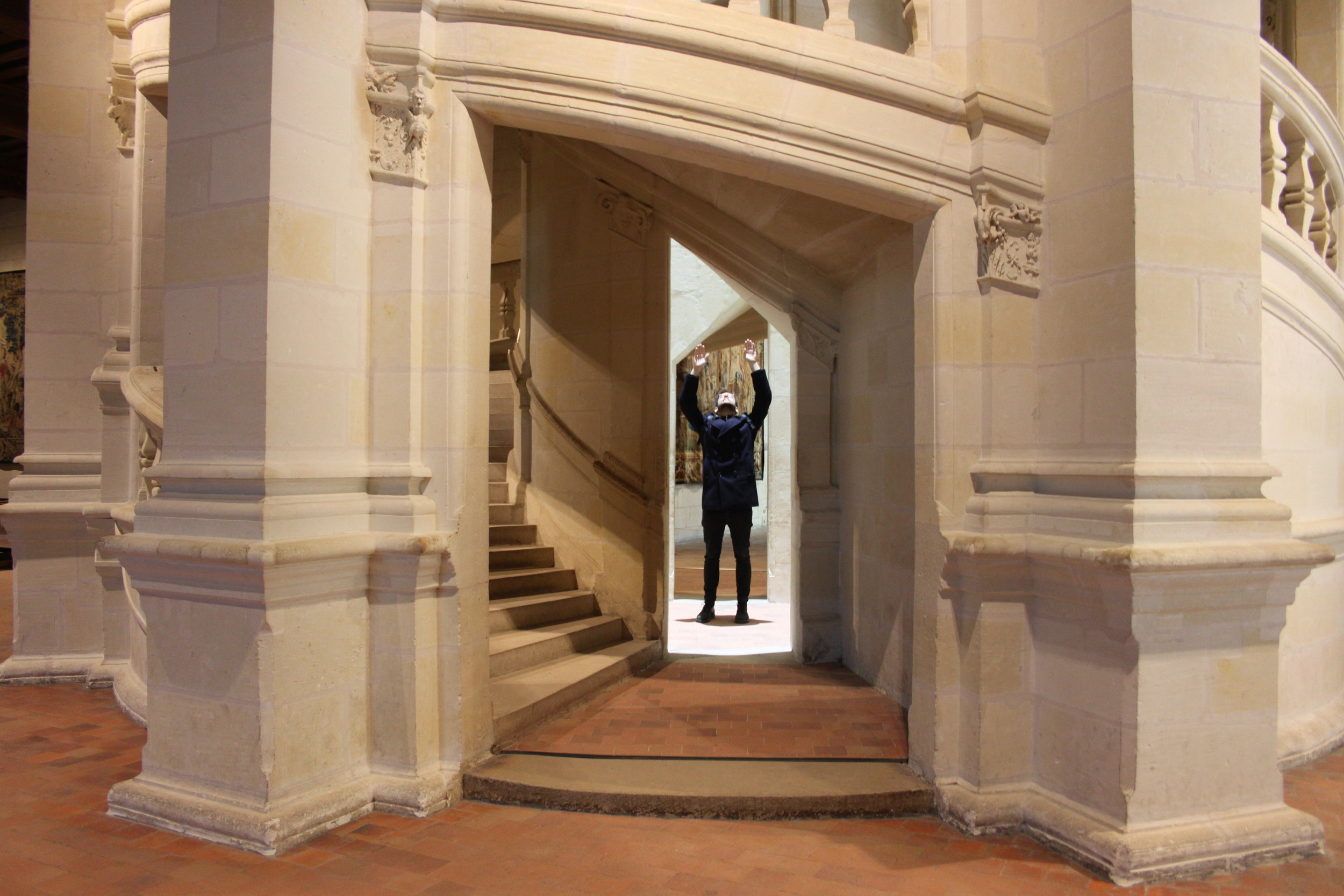
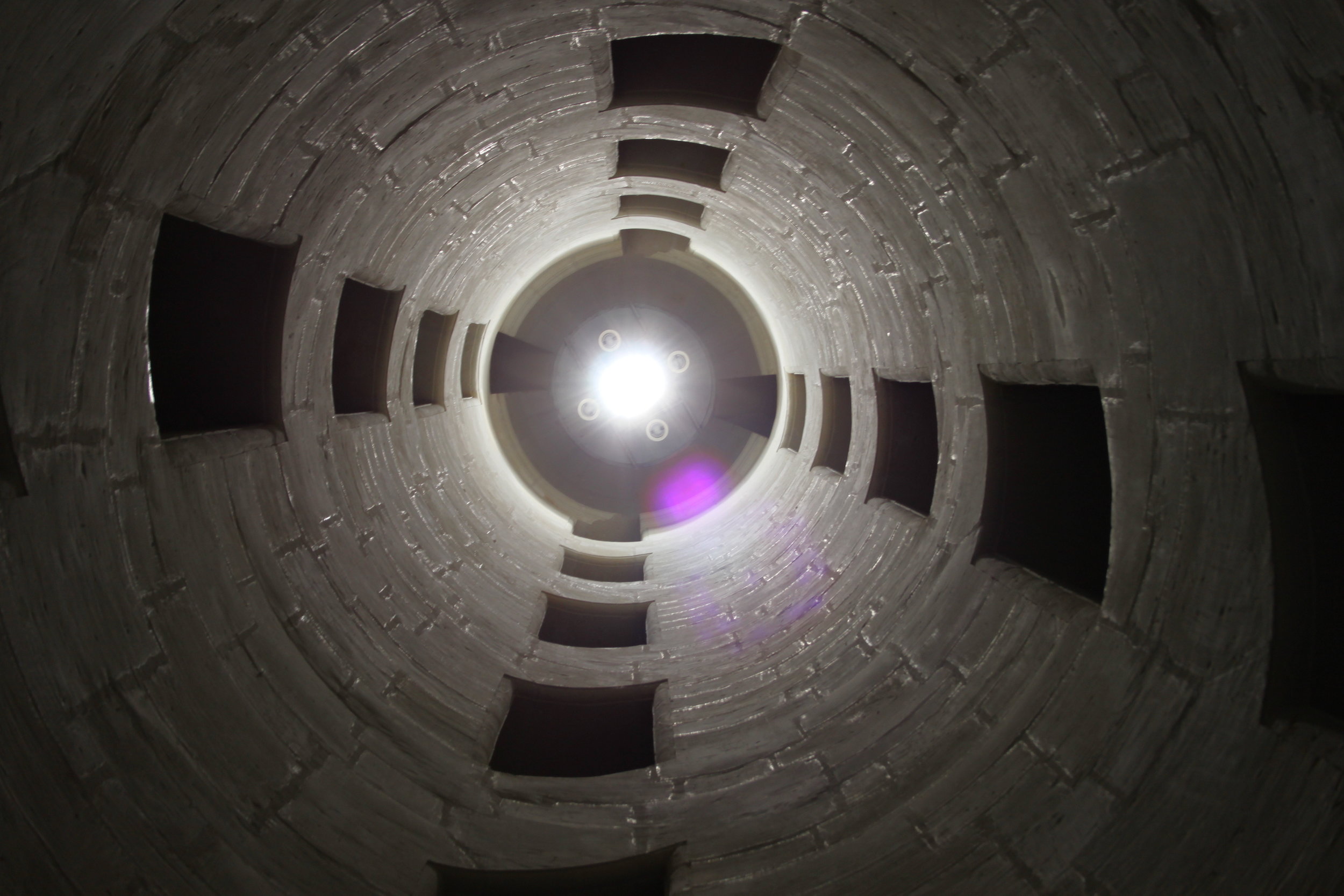
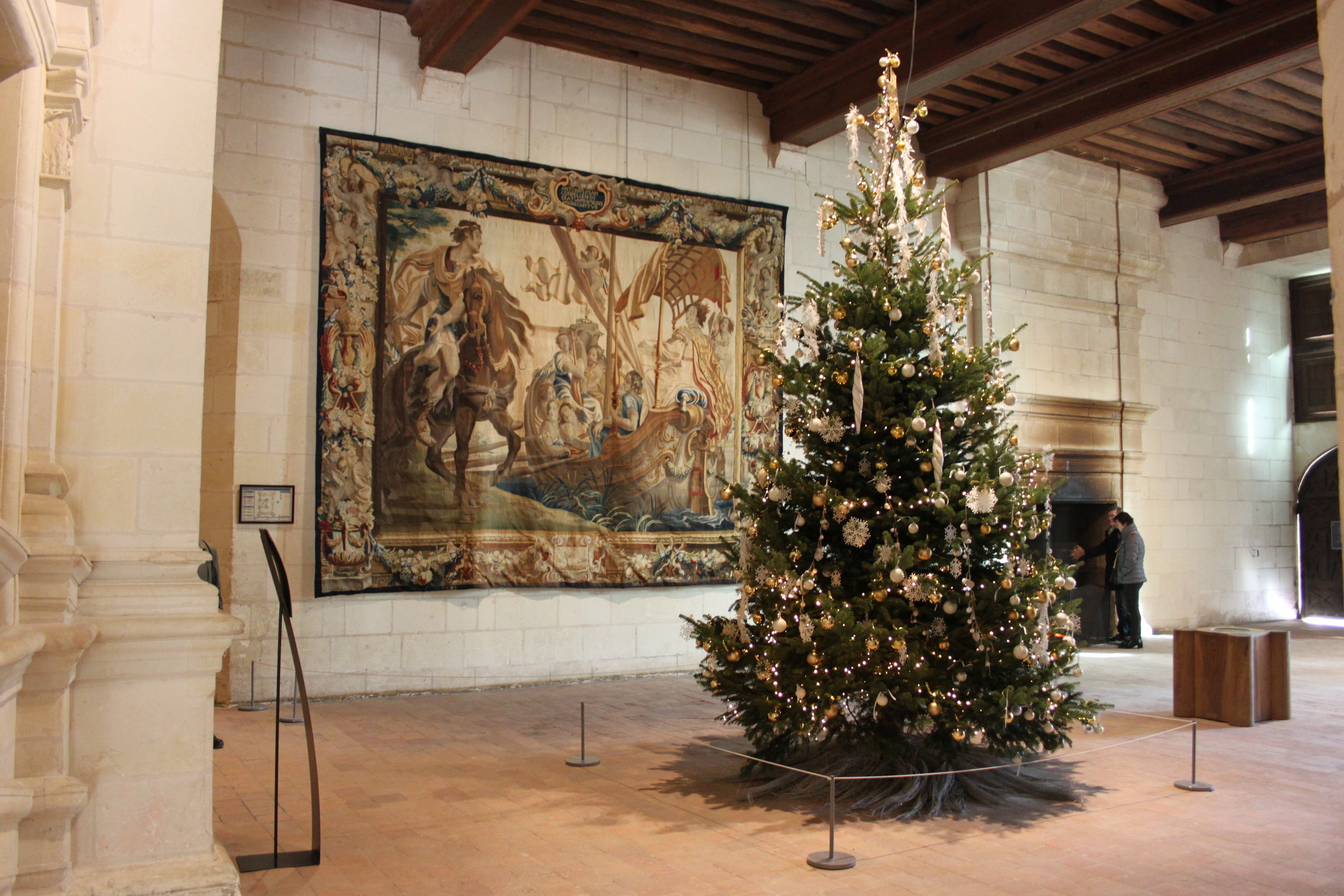
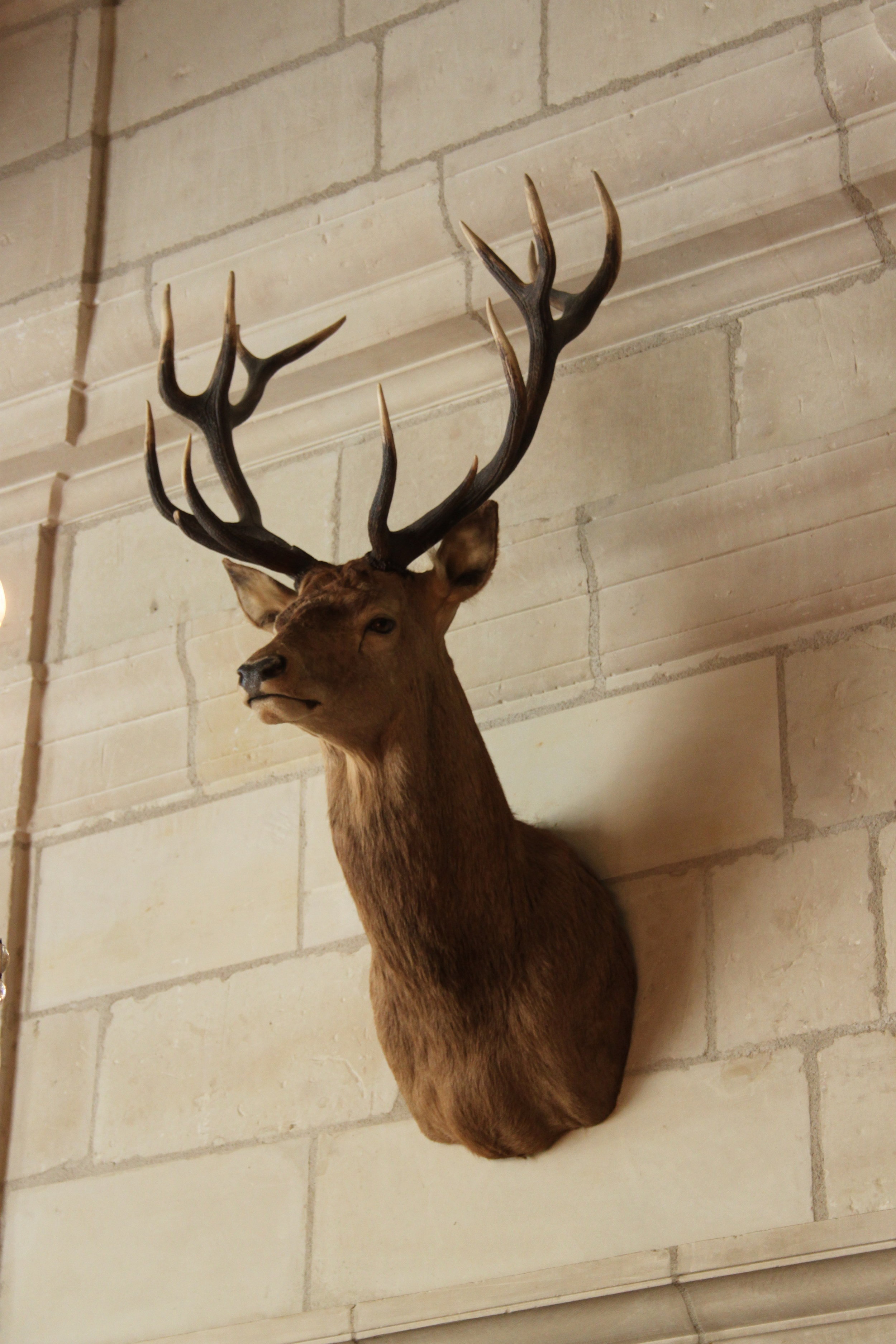
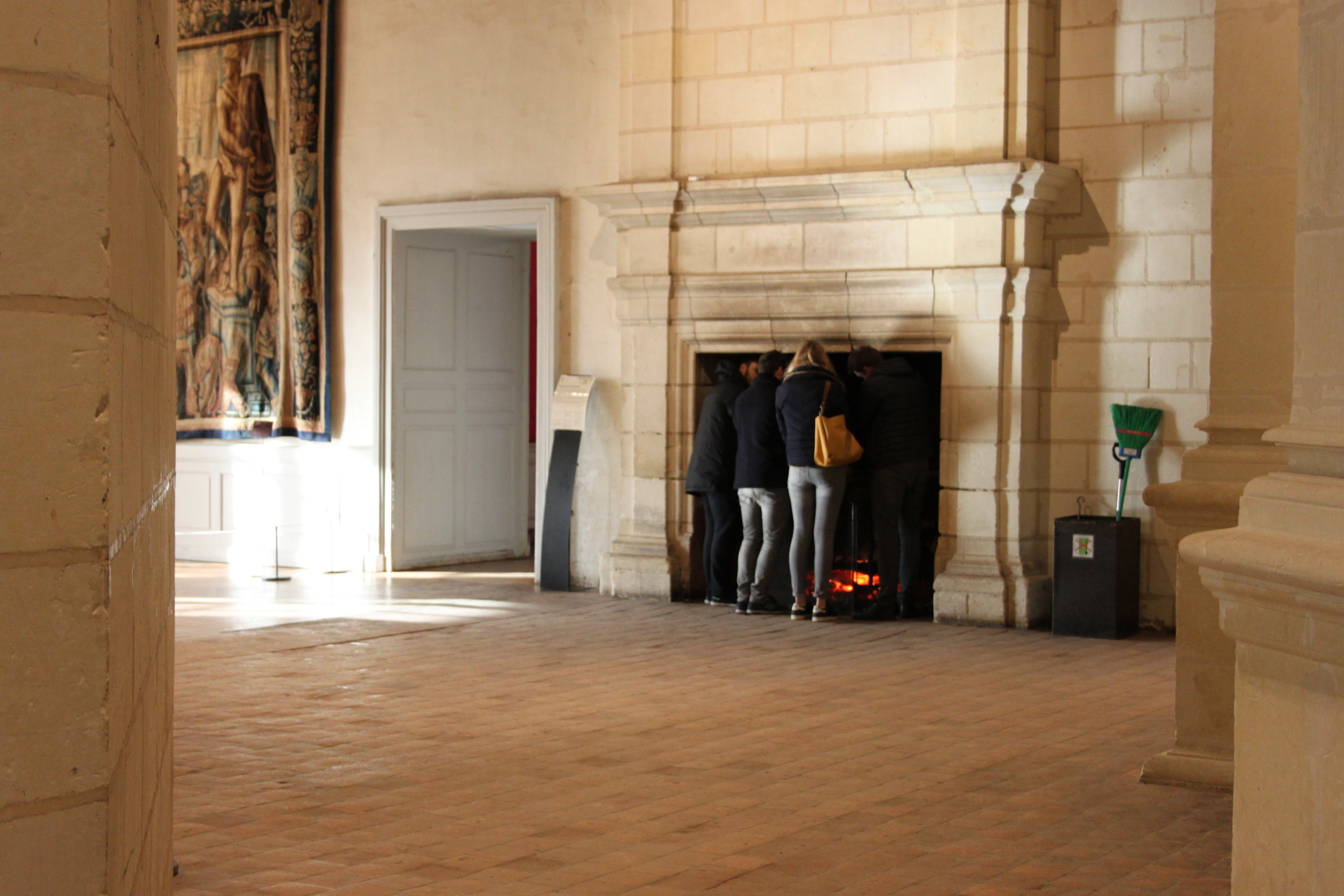
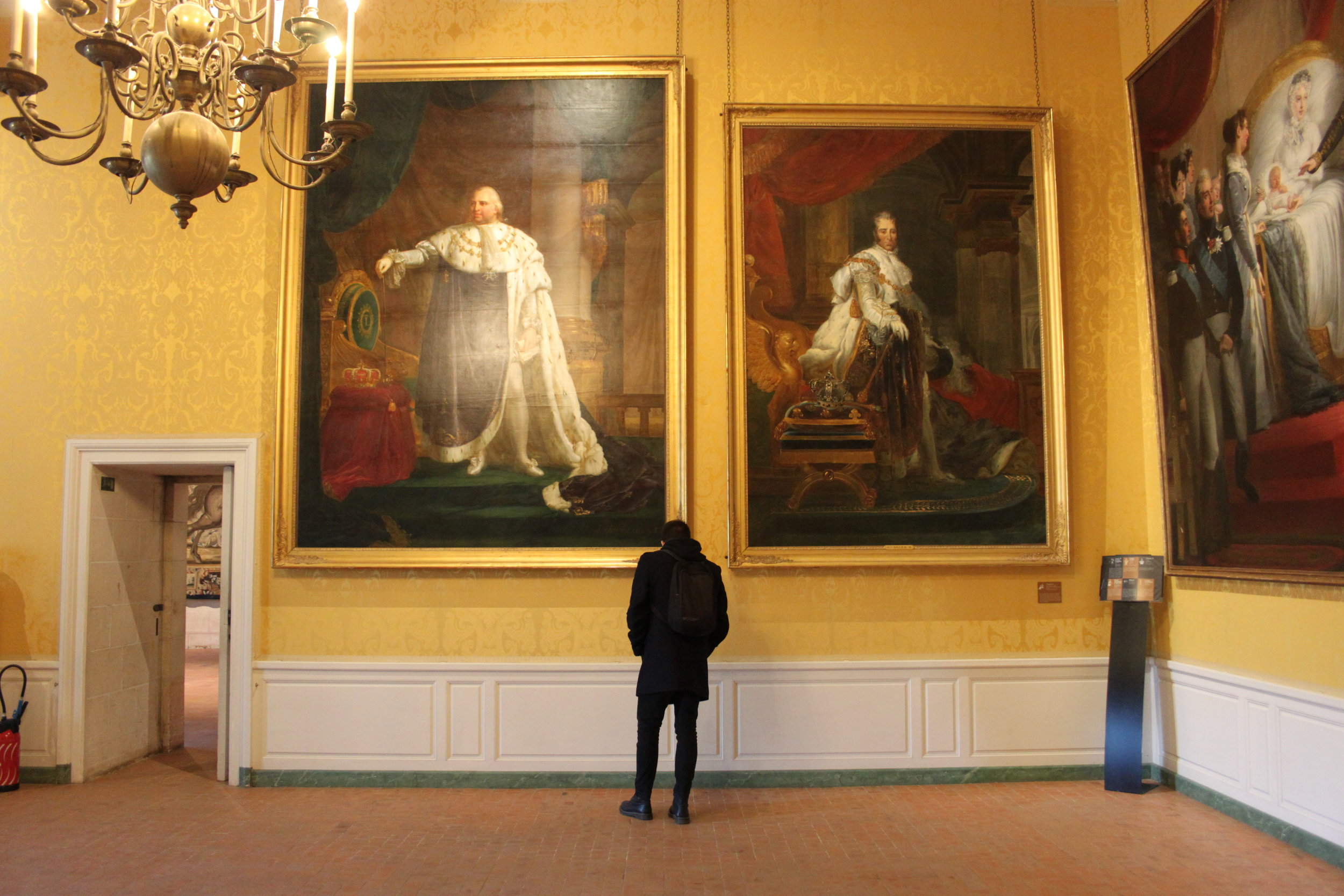
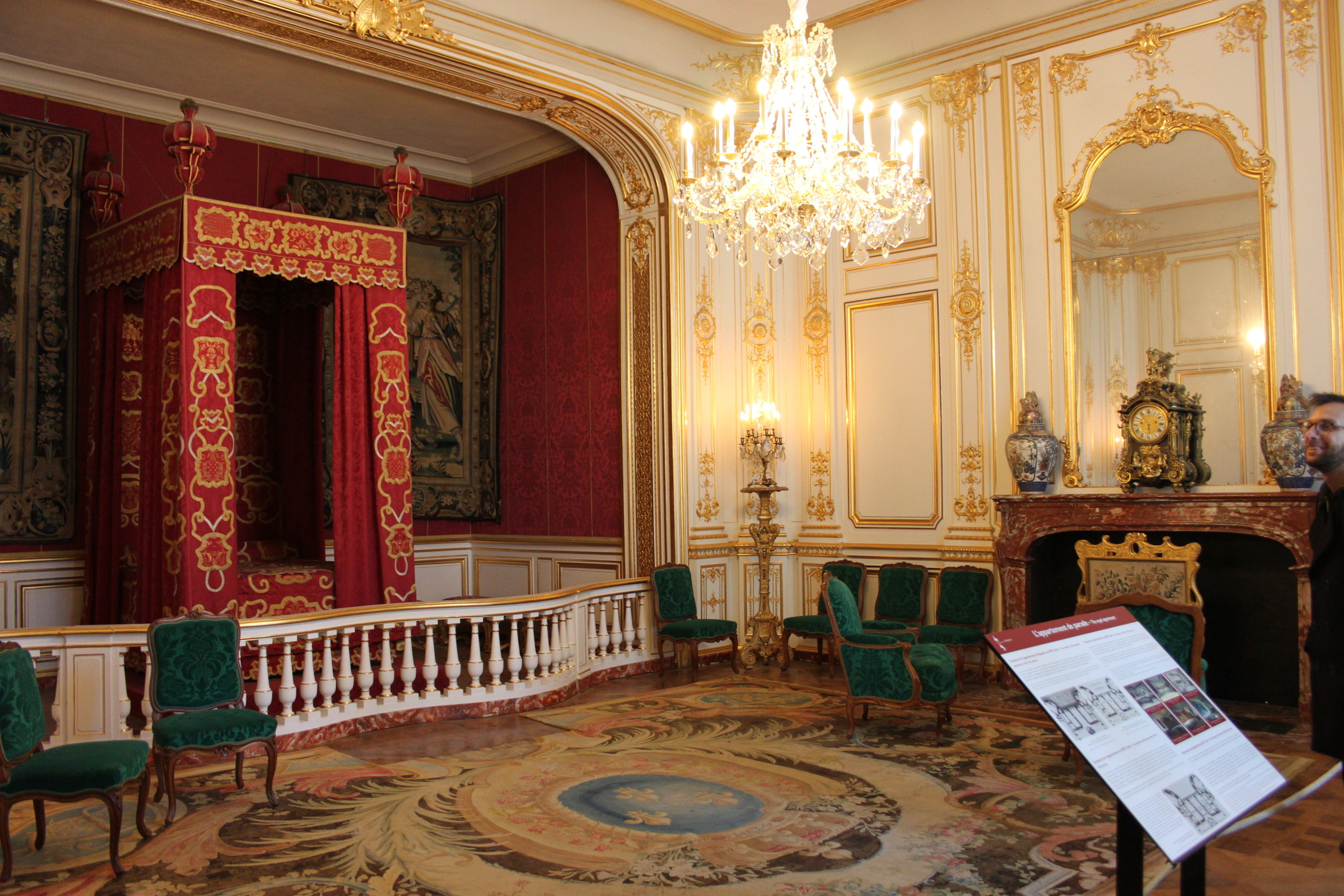
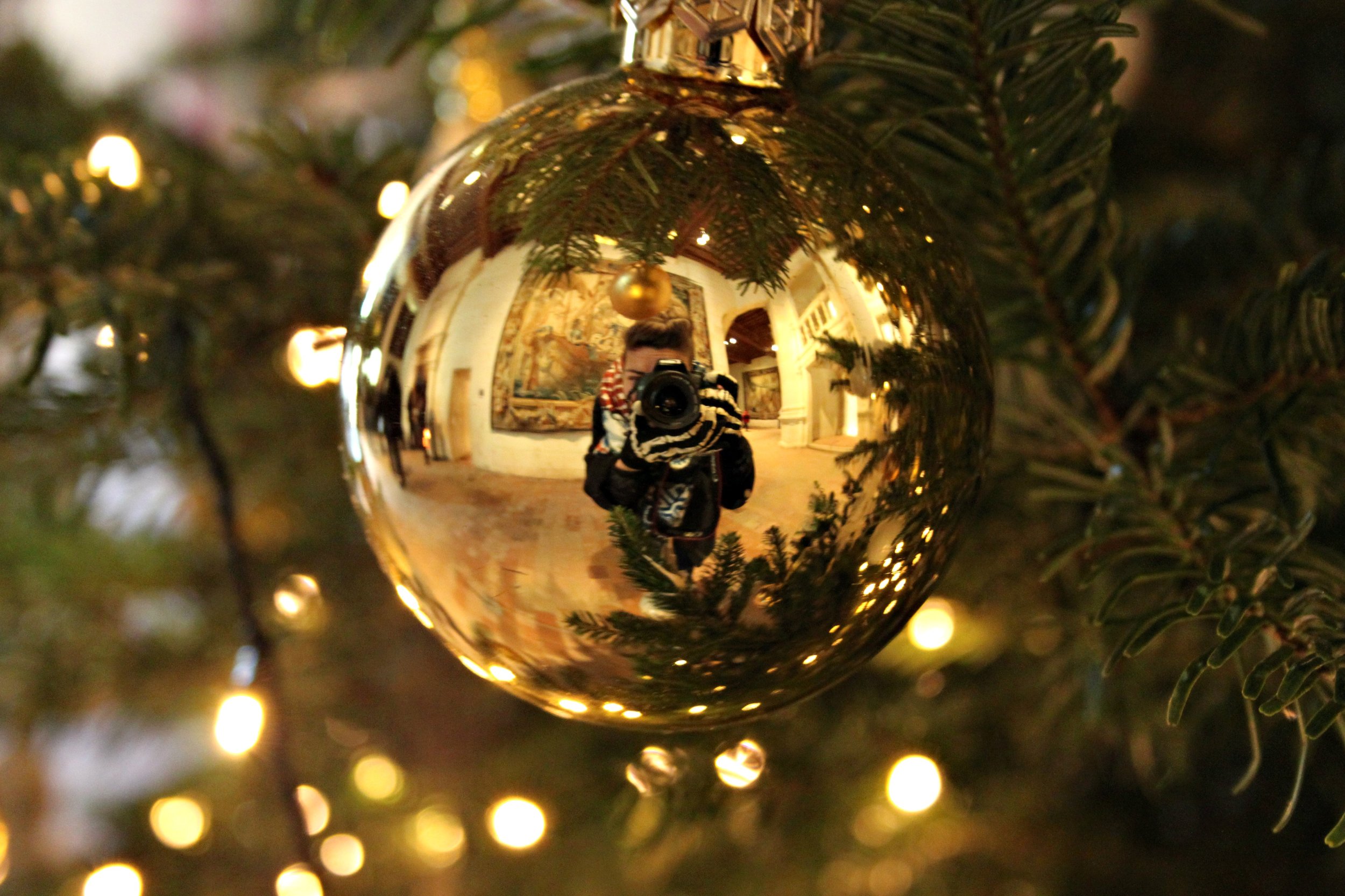
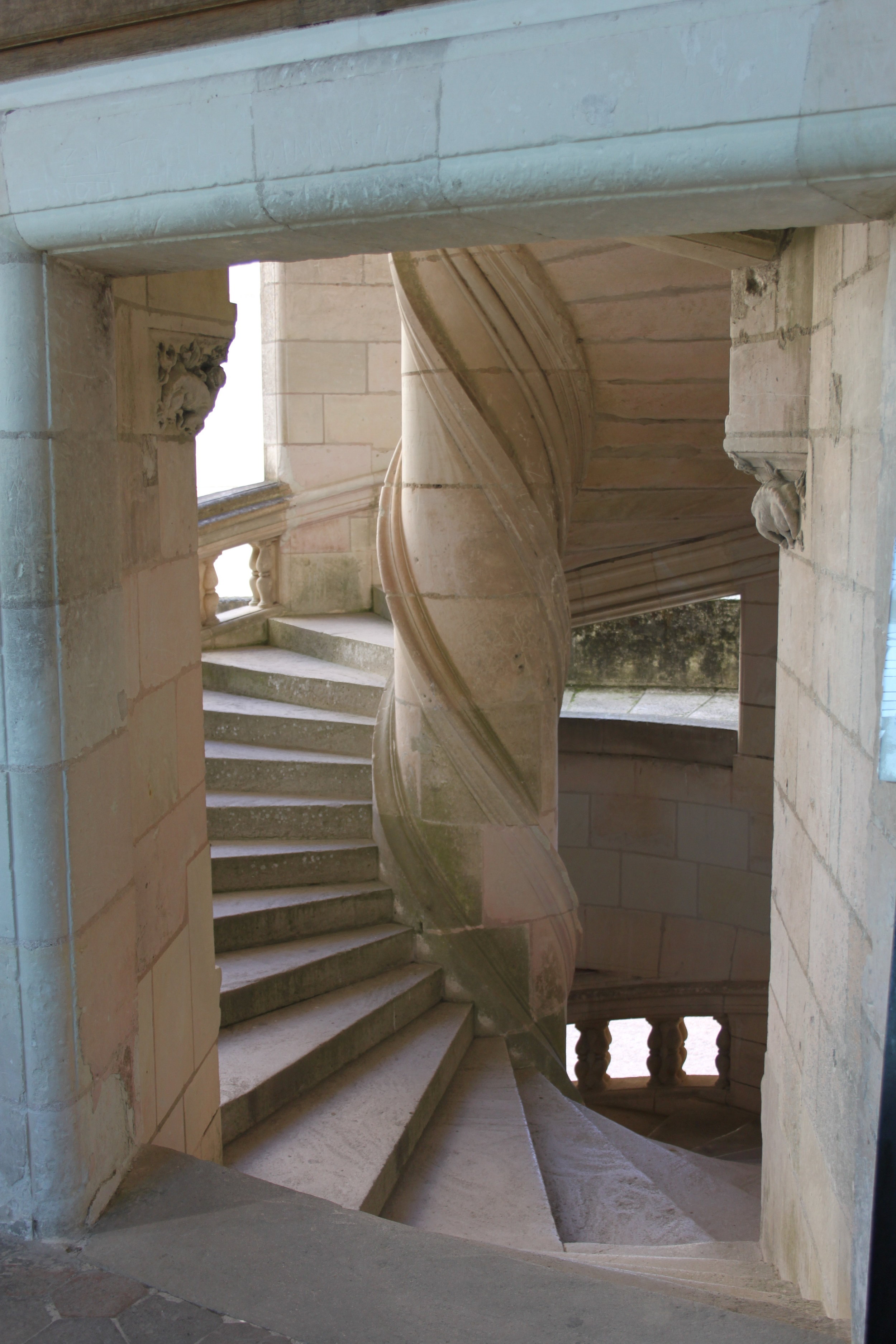
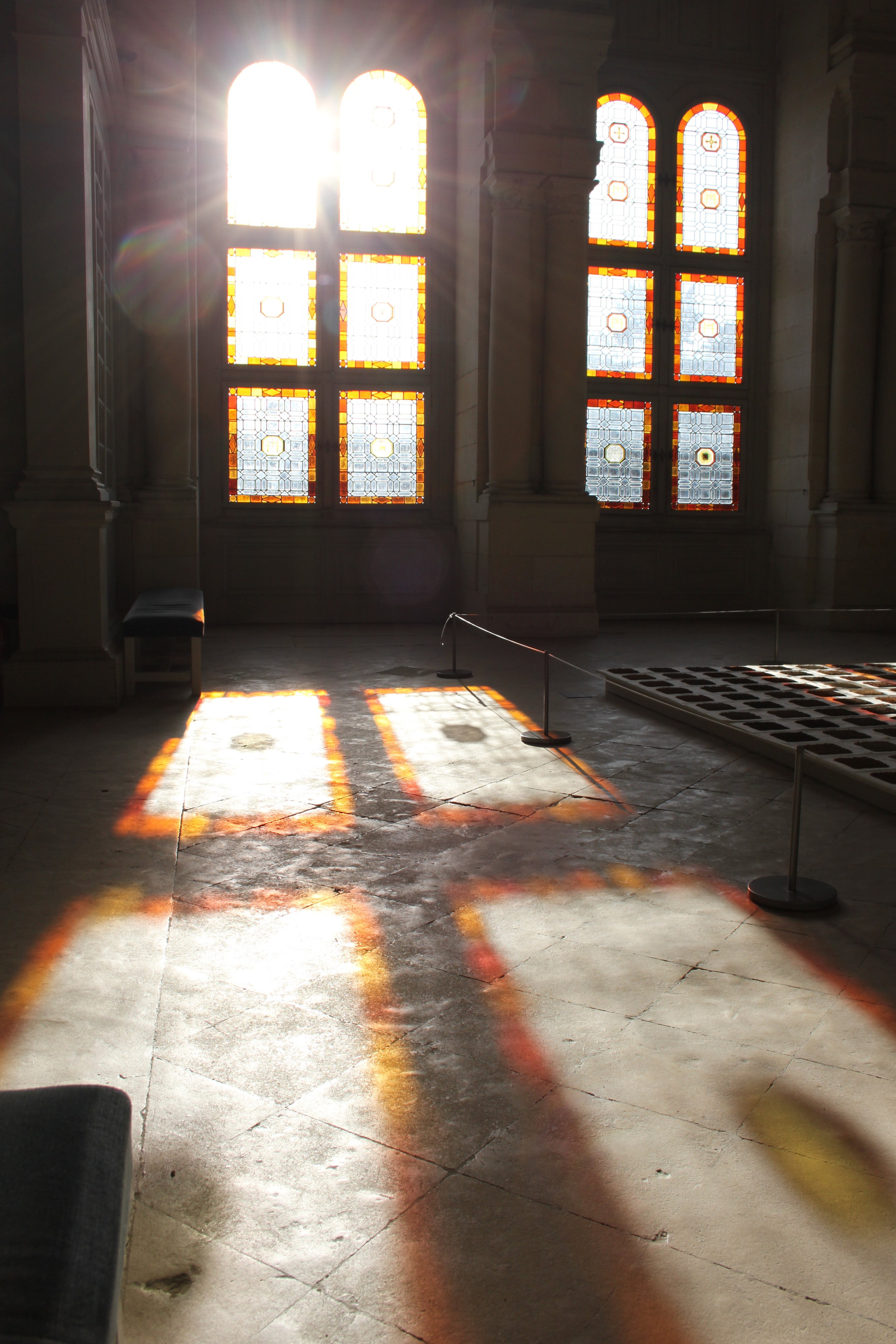
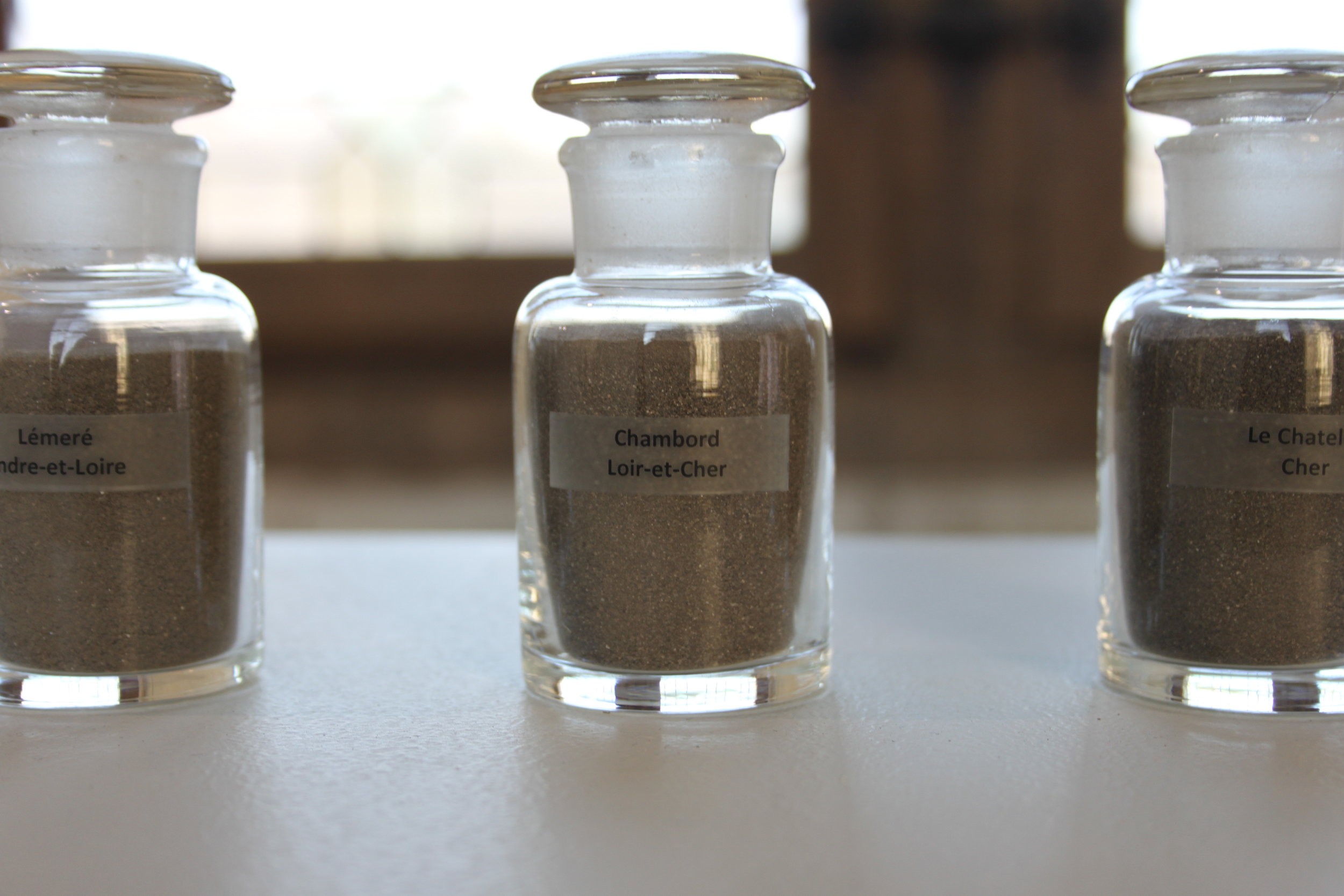
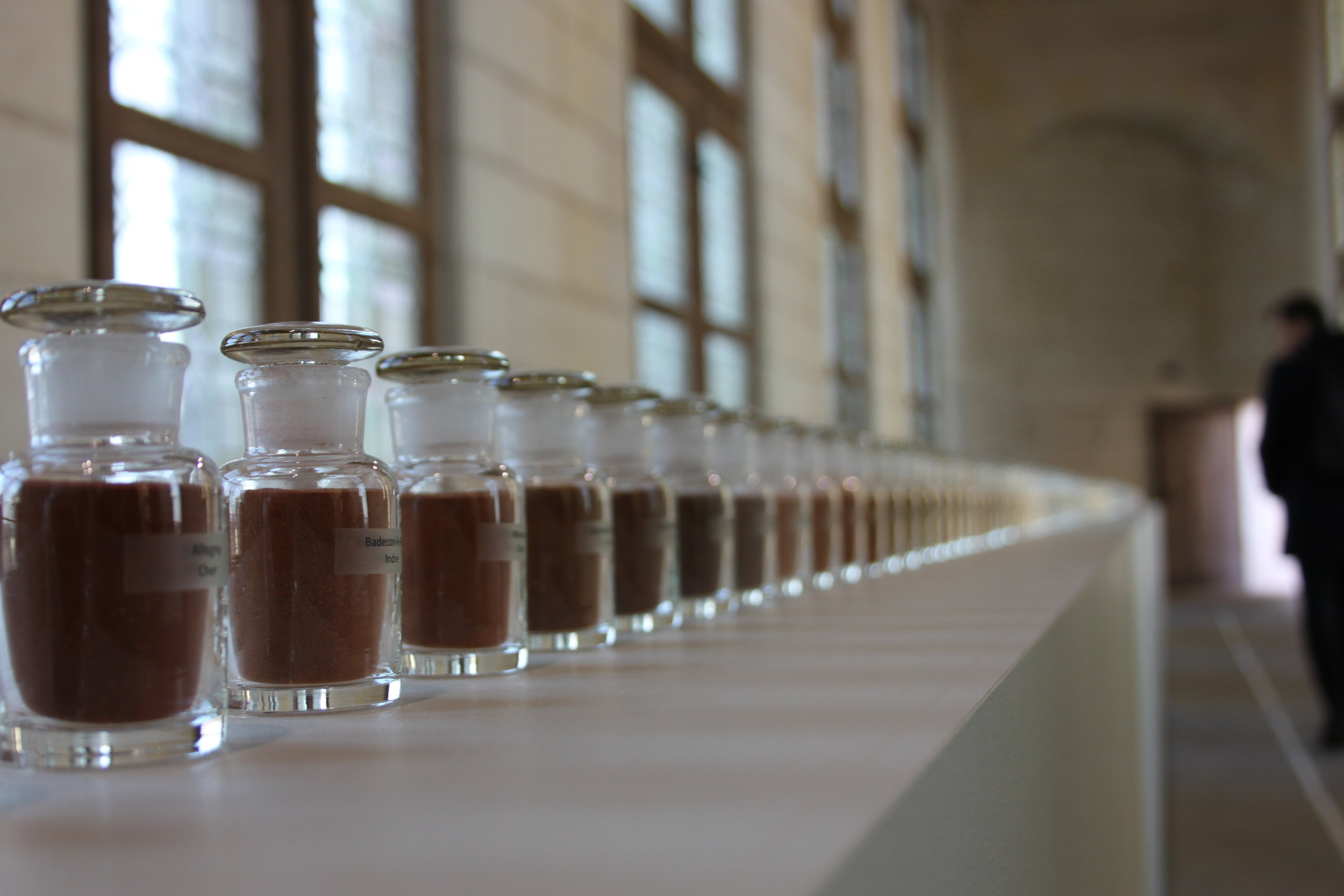
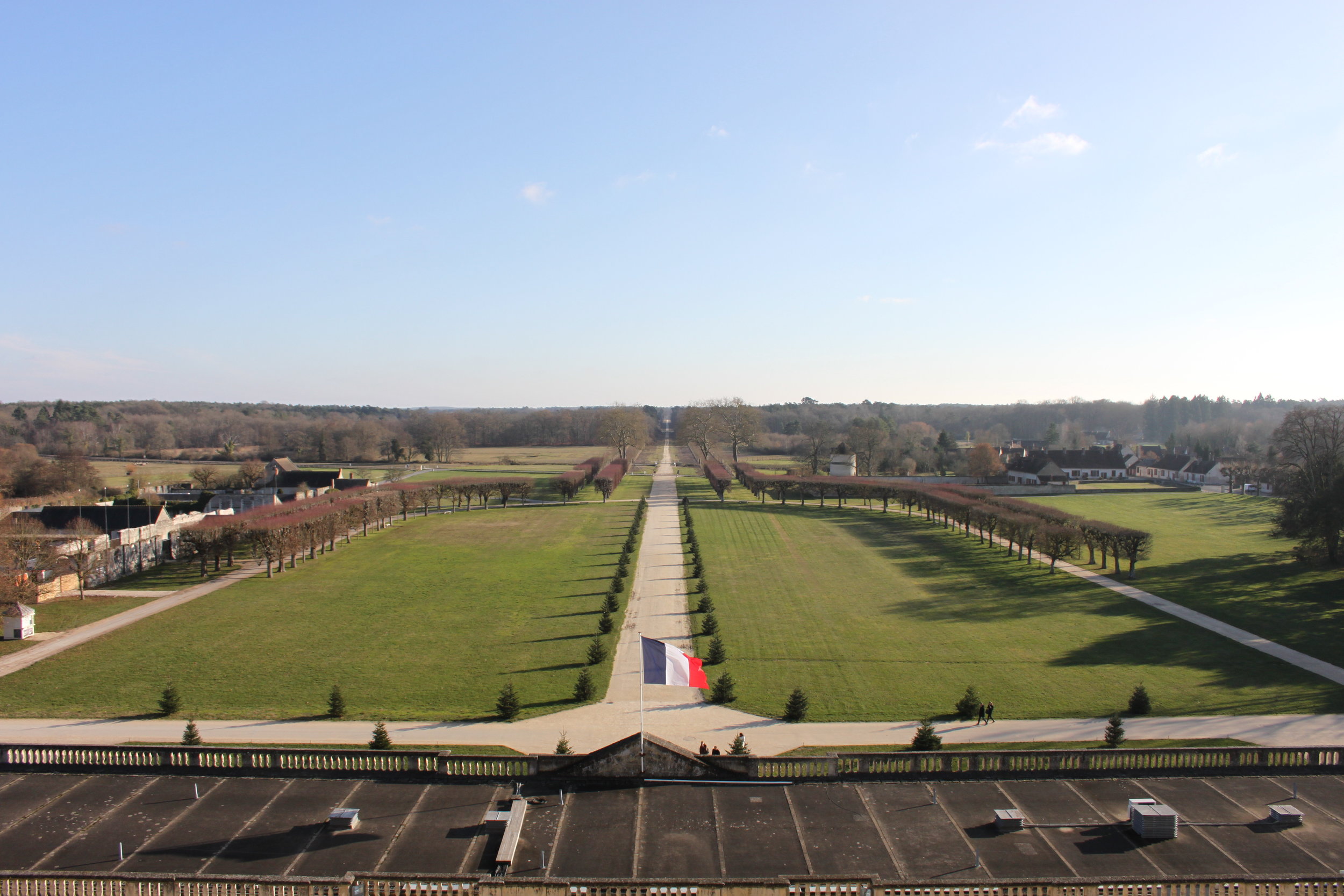
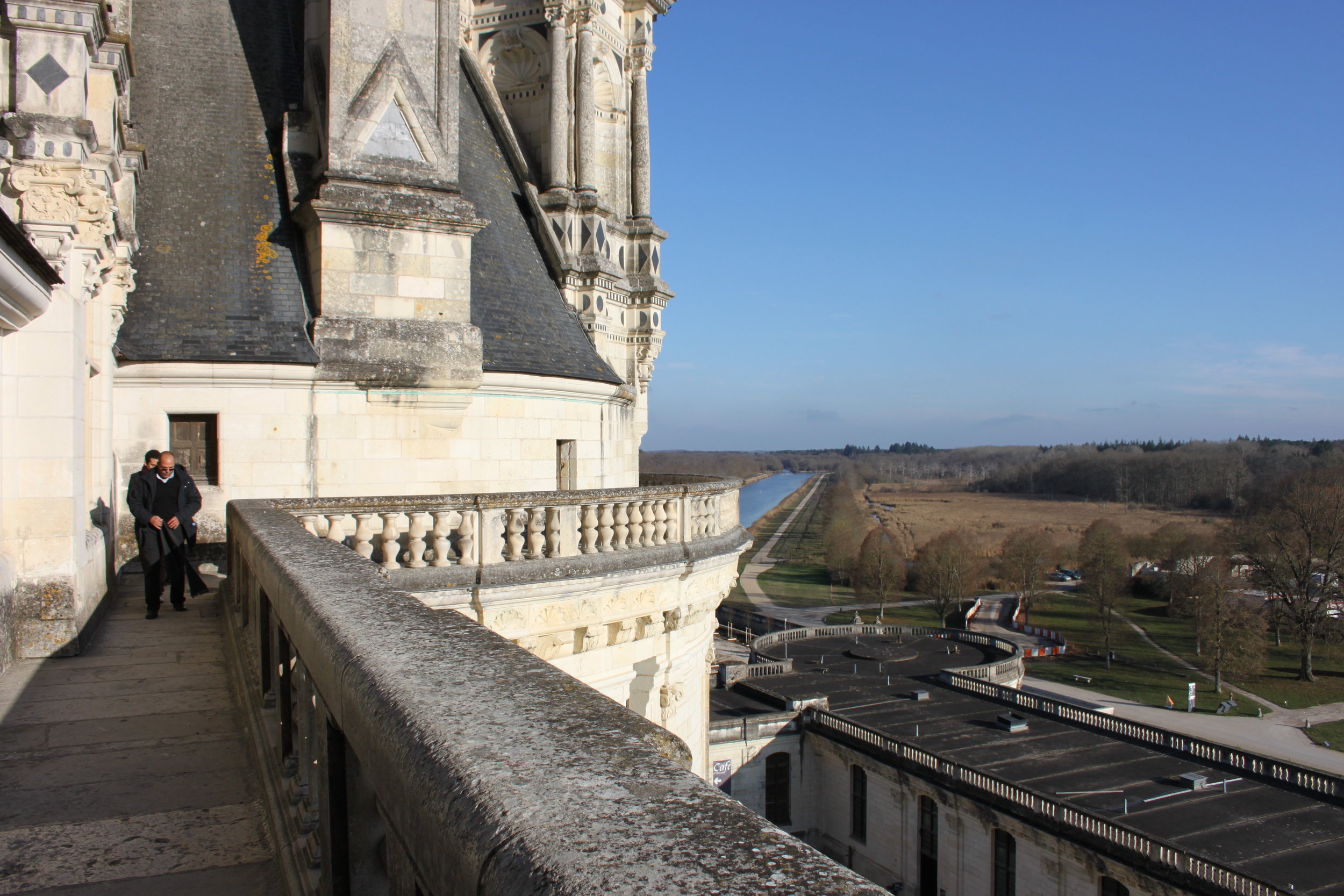
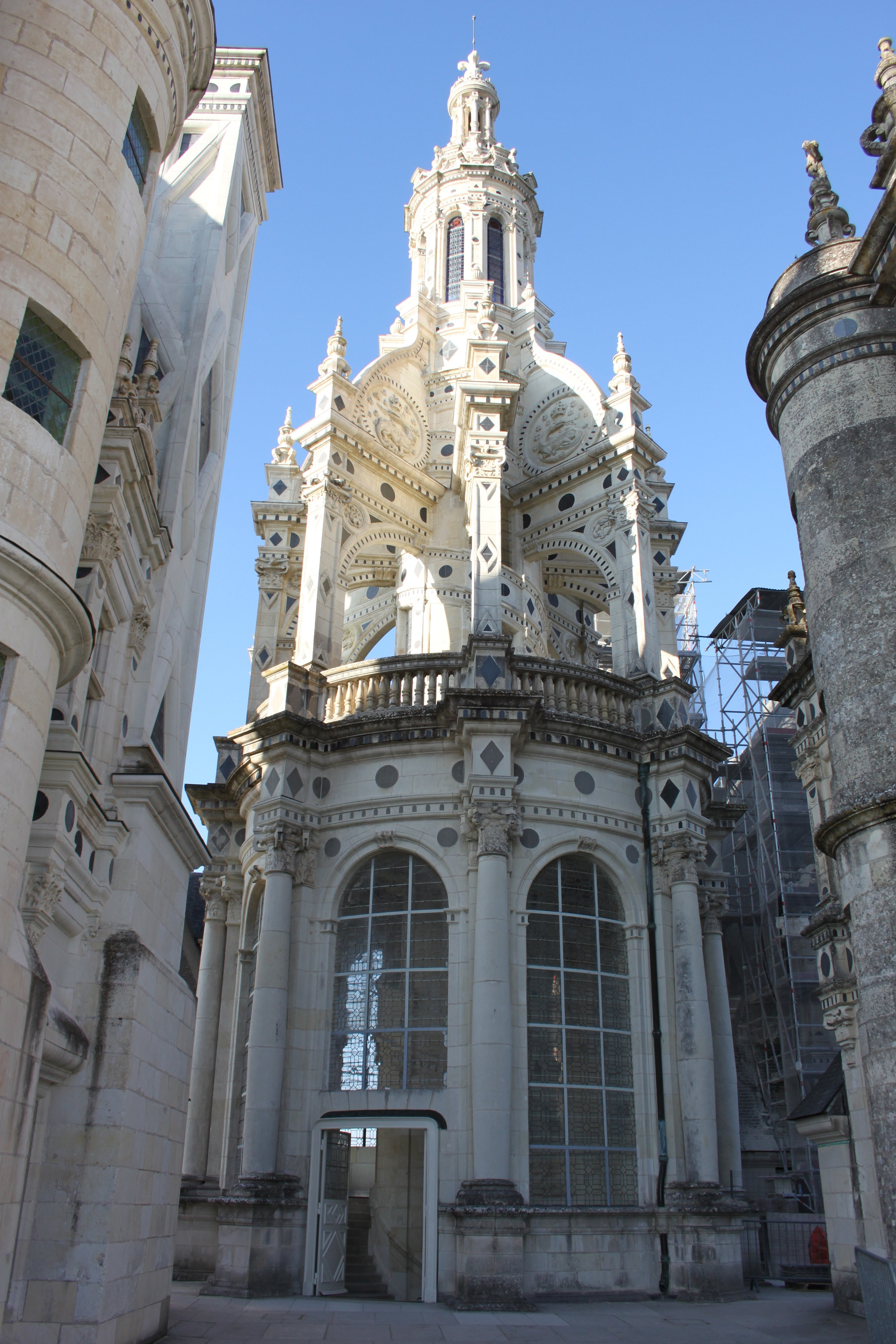
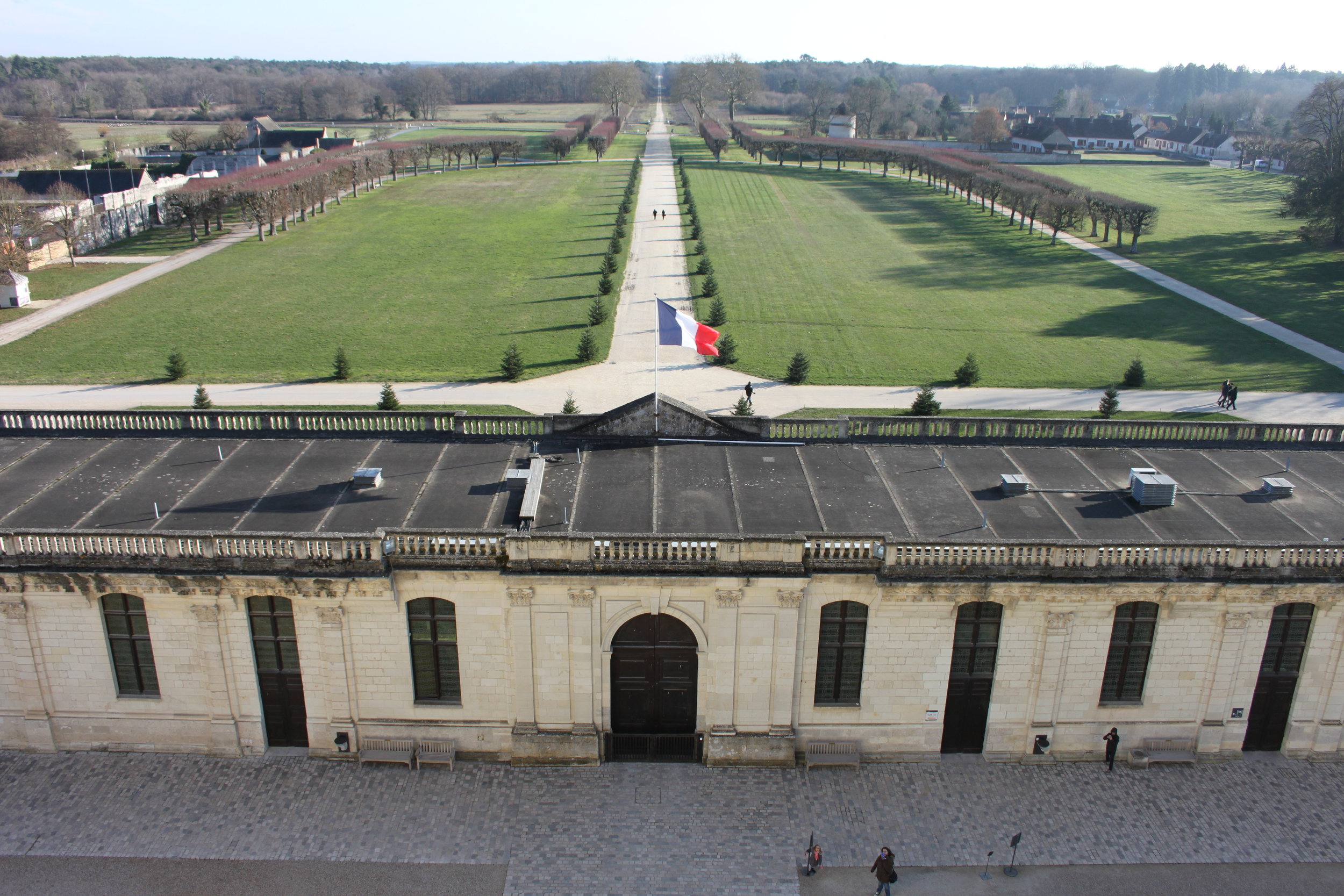
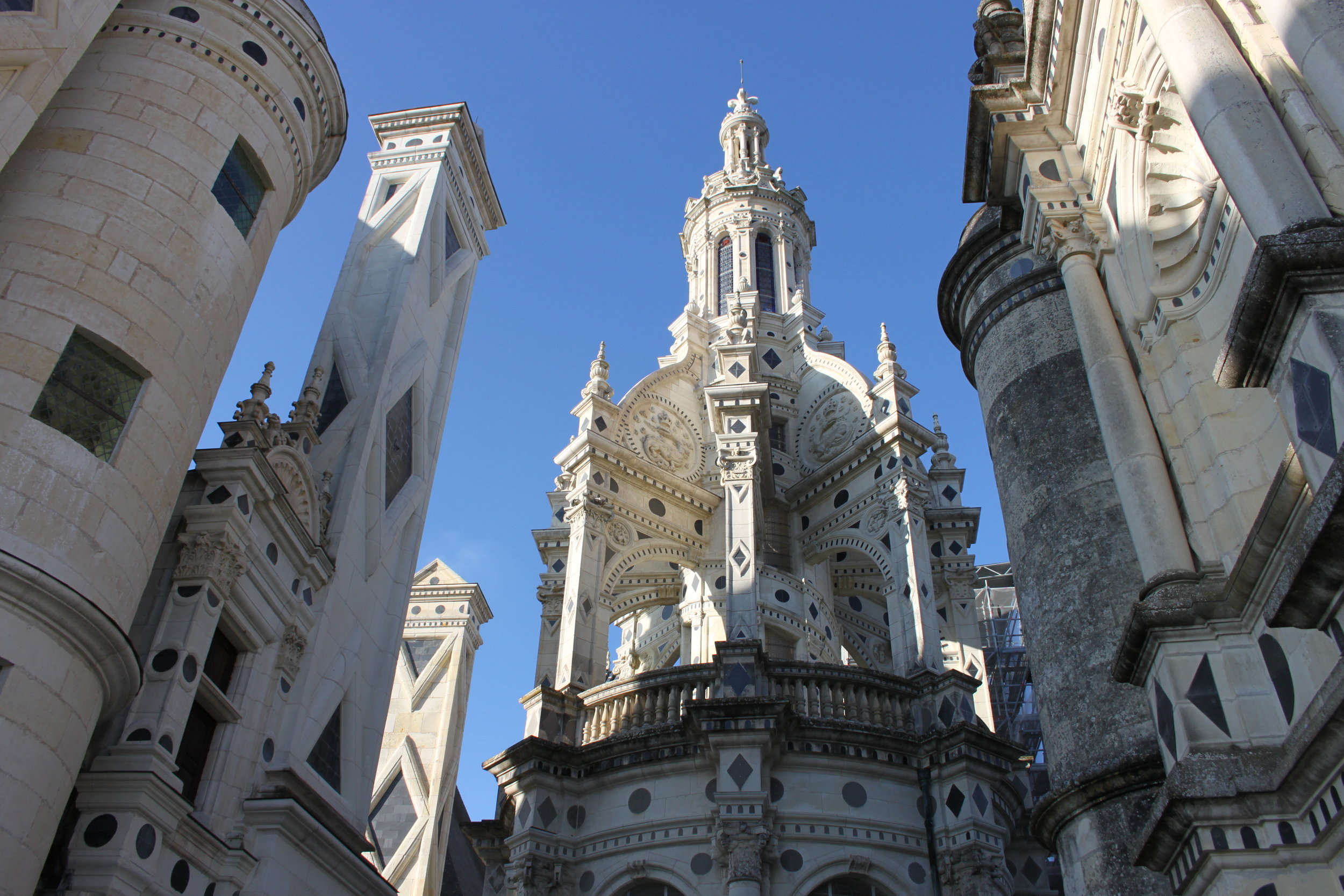
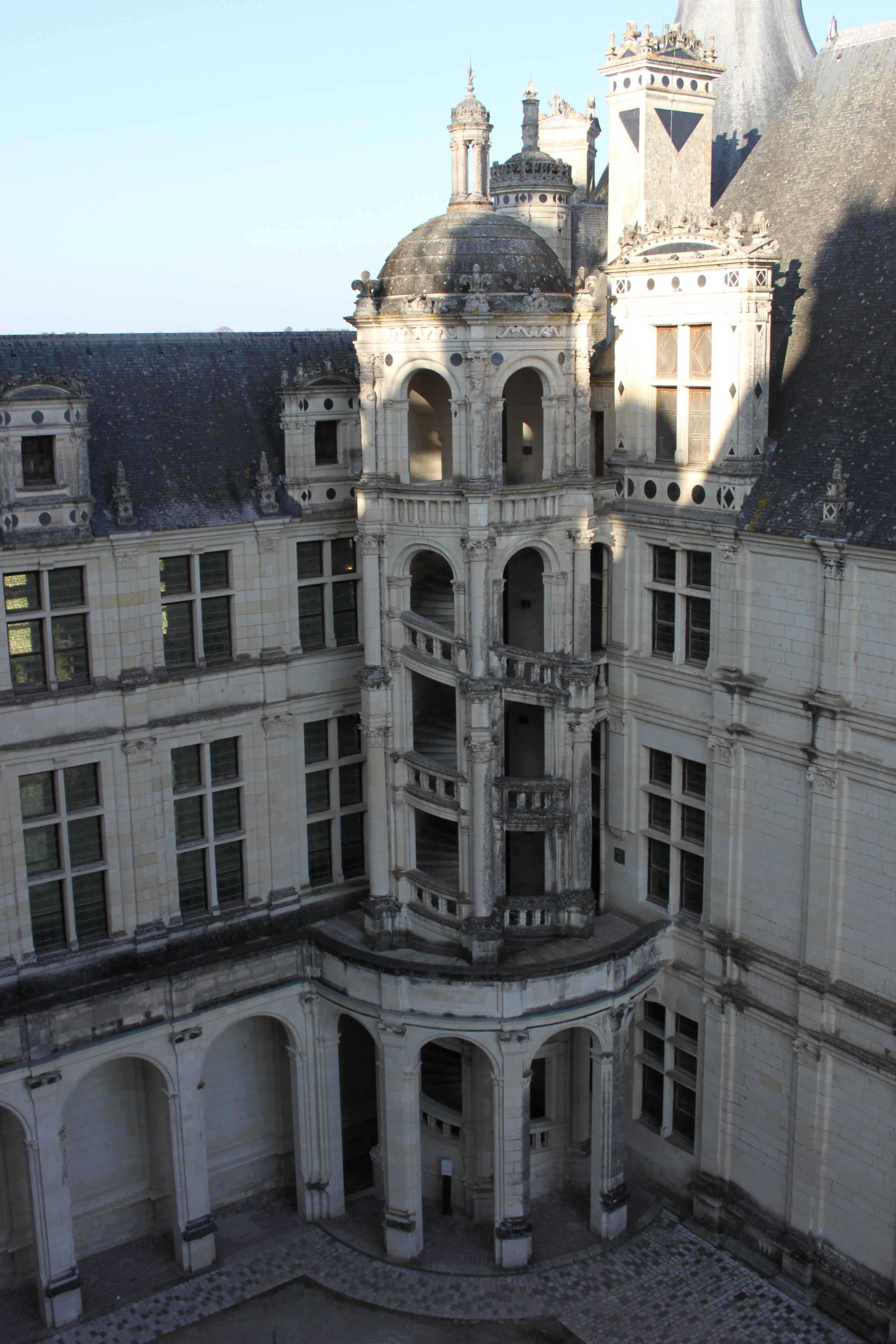
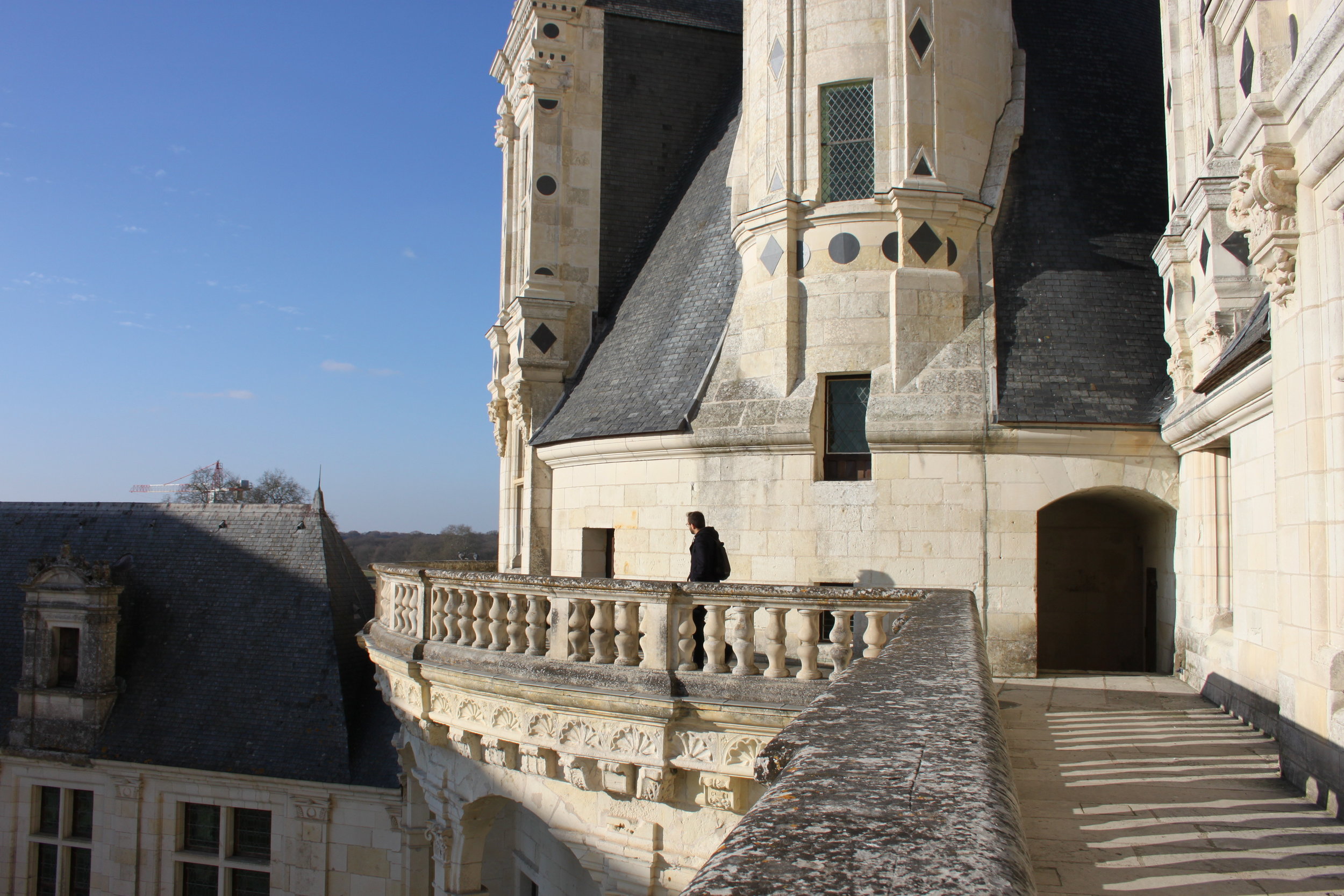
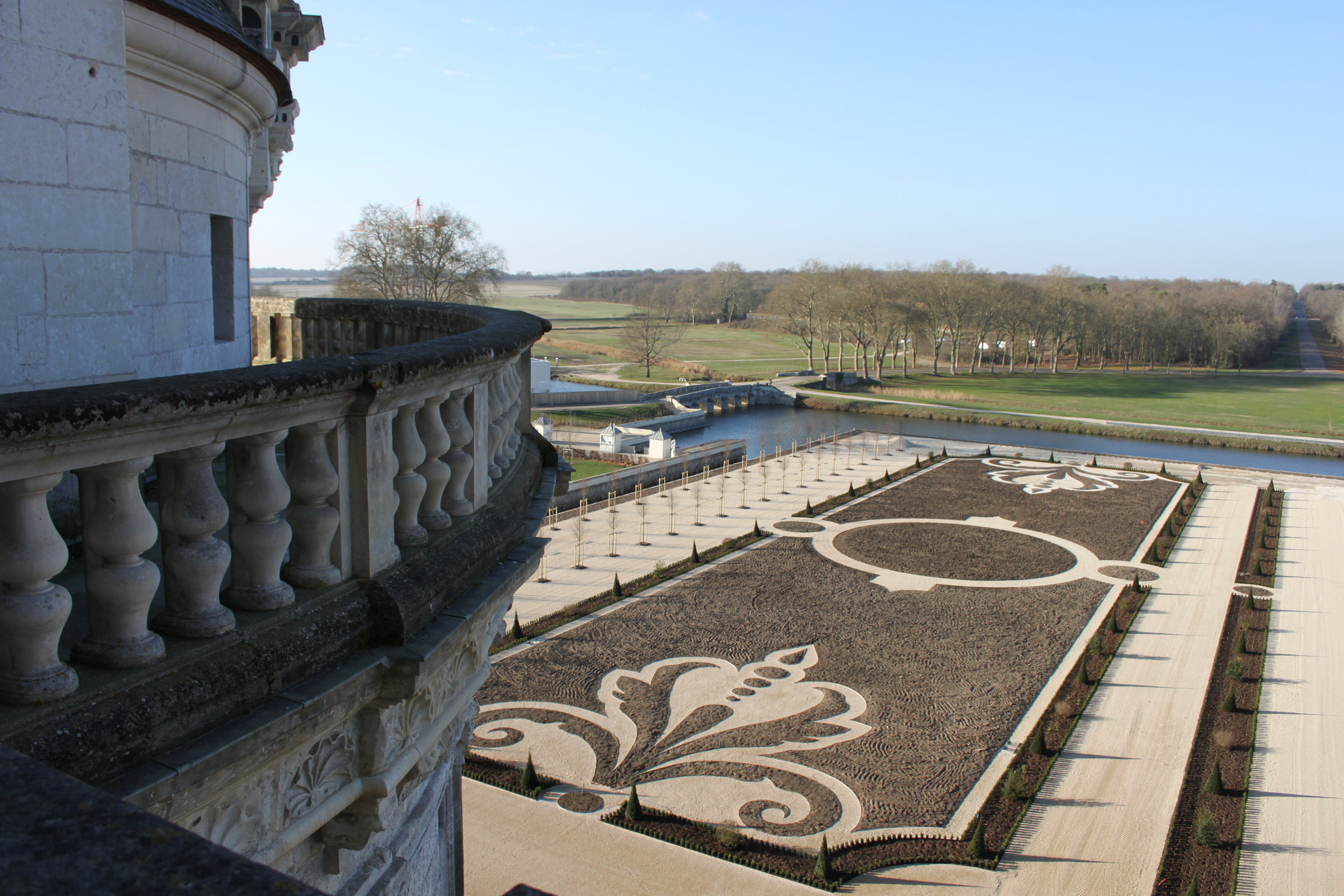
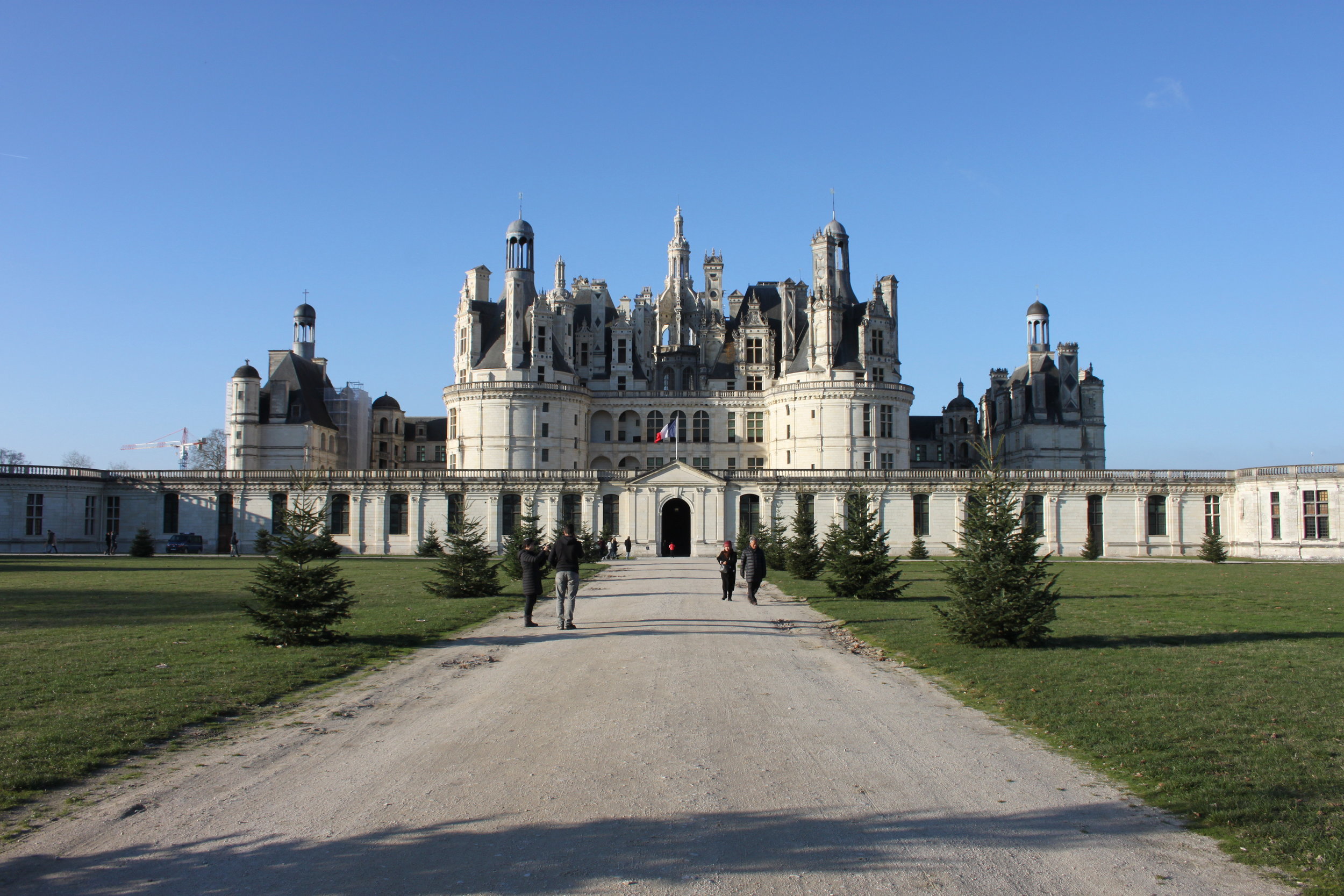
Pssst... I've lived in France for 7 years, and it has become my second home. Click here to read more of my travel and adventure writing from this beautiful country.















